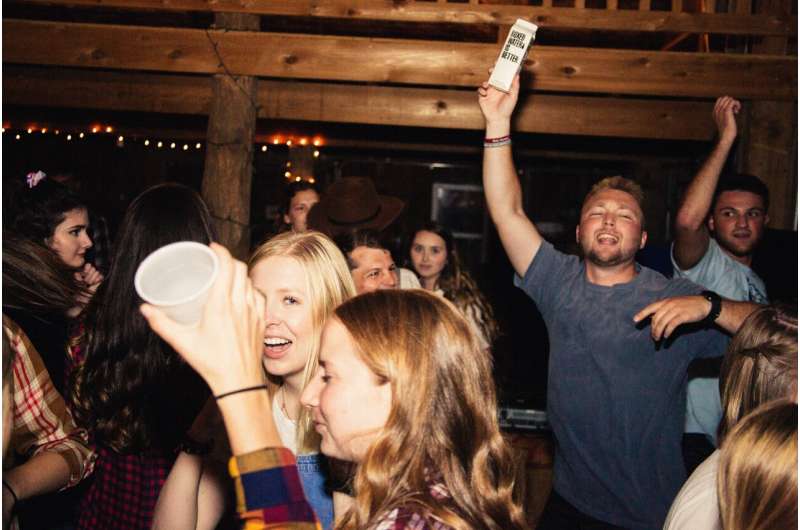This article has been reviewed according to Science X's editorial process and policies. Editors have highlighted the following attributes while ensuring the content's credibility:
fact-checked
peer-reviewed publication
trusted source
proofread
Facial symmetry doesn't explain 'beer goggles' phenomenon, research shows

If you thought blurry eyes were to blame for the "beer goggles" phenomenon, think again.
Scientists from the University of Portsmouth have tested the popular theory that people are more likely to find someone attractive while drunk, because their faces appear more symmetrical.
The term "beer goggles" has been used for decades to describe when a person finds themselves sexually attracted to someone while intoxicated, but not sober.
One possible explanation for the effect is that alcohol impairs the drinker's ability to detect facial asymmetry, thus making potential partners more visually appealing.
Existing research has shown that a part of what makes people attractive to others is how well both sides of their face match. The thinking goes, the more symmetry the better the gene pool. But when alcohol is introduced, it's thought a person is less likely to notice if the faces around them are non-symmetrical.
However, a new experiment found that while alcohol did impair face symmetry detection, it had no influence on facial attractiveness judgments.
Dr. Alistair Harvey from the University of Portsmouth's Department of Psychology, said, "Alcohol is a strong predictor of sexual behavior, often consumed before or during dates.
"There are a range of possible reasons why alcohol drinkers are more inclined to engage in sex, including a lack of inhibition, heightened expectations, personality traits, and the beer goggles effect.
"Due to the limited research on this topic, we ran a field experiment to help determine why people often experience unexpected—and regretted—sexual escapades after having one too many."
To gather the results, the team visited a local pub in the Portsmouth area. A total of 99 men and women volunteered for the study, ranging in age from 18 to 62 years old.
They were asked to rate 18 individual faces for attractiveness and symmetry. Each type of rating was given twice, once for faces showing an enhanced asymmetry, and again for the same faces in their natural form. Participants then judged which of two same-face versions (one normal, the other perfectly symmetrized) was more attractive and, in the final task, more symmetrical.
The study used a robust procedure, taking ratings of individual faces in addition to the usual binary approach where participants select the more attractive or symmetrical face in a pair.
As predicted, heavily intoxicated individuals were less able to distinguish natural from perfectly symmetrized faces than more sober drinkers. But the more drunk viewers did not rate the faces as being any more attractive.
As expected, both male and female participants rated natural faces as being more attractive than the ones that were doctored to look wonky. But, surprisingly, this bias was stronger among women.
The paper, published in the Journal of Psychopharmacology, says one possible explanation to the findings could be that attractiveness depends on many factors that simply swamp the small effects of face symmetry.
"We don't deny the existence of a 'beer goggles' effect," added Dr. Harvey.
"But we suspect it would be more easily detectable when using live models for an experiment, instead of static photographs. Images conceal a range of important visual criteria for attractiveness, including build, body shape, height, expression, and clothing.
"Therefore, further research is needed to find the missing piece to the puzzle."
More information: Alistair J Harvey et al, Impaired face symmetry detection under alcohol, but no 'beer goggles' effect, Journal of Psychopharmacology (2023). DOI: 10.1177/02698811231215592
Journal information: Journal of Psychopharmacology
Provided by University of Portsmouth



















